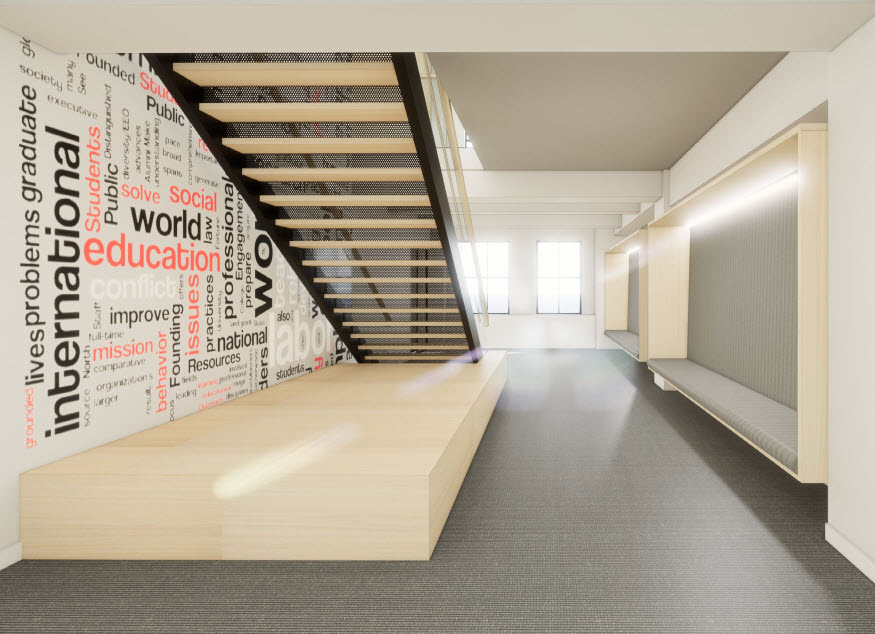 Image courtesy FXCollaborative Architects LLP
Image courtesy FXCollaborative Architects LLP
As part of their work, architects learn to interpret 2D plans, sections and elevations and get a pretty good idea what a space will look like when it's completed. Our clients lack the experience of looking at hundreds of drawings and need help to understand what they're seeing. We are fortunate now that powerful graphical computer programs are available for us to create photorealistic images and animations to show them, either on computer screens or through the use of virtual reality headsets, what their projects will look like. The renderings are complete with simulated natural and artificial lighting, materials, transparency, and even animated figures walking around the space, providing a sense of scale and life.
Before modern computer renderings, of course, design presentations would include miniature scale models and hand-drawn perspective renderings. These were considered perfectly adequate for many generations of architects to offer their clients a sense of what the finished projects would look like.
It's possible, however, that powerful rendering tools actually create risk for architects. With hand-drawn renderings, there's a stylistic language used that makes it obvious that there was significant artistic license taken. Plus, hand-drawn images are totally static. With computers, renderings can be changed and re-generated in a matter of hours. This realism and convenience may promote the notion that 'what you see is what you get', but that's often not the case.
The image at the head of this post serves as a useful example. It's detailed enough to suggest that everything in the space is shown as it would be constructed. The team who created it went to the trouble to include a view through the perforated stair treads and even the lens flare from sunlight coming through the windows. But there are a number of things that, due to this being an early stage rendering, were intentionally omitted for clarity. These include sprinkler heads, HVAC diffusers, electrical outlets, fire alarm devices, and signage. Other things were simplified, again for clarity, like what supports the stair treads, and the notion that the wood platform under the stairs is free from panel joints.
It's simple to make owners understand that even as realistic as they are, renderings are conceptual. But when the inevitable clutter of real-life building appears, may the client point to the design rendering and wonder, "what happened?" To avoid this, architects are well-advised to continuously refer to the conceptual drawing as a 'master' in order to manage the impact of the clutter, and to communicate with the client about how the design is developing.
There's a specifications analog to the conceptual rendering: the preliminary project description (PPD). Like a rendering, it includes the broad strokes concepts the design team will follow as a project moves through design phases. But instead of images, the PPD includes the program requirements and major criteria, followed by descriptions of significant building systems, structural elements, envelope components, finishes, and other items included in the project. Most visual renderings do not get filled in with realistic clutter as the project is developed. It's not their purpose to show the clutter. A PPD, on the other hand, can be updated, continuously reviewed and corrected, and become a real repository of the team's built-up project knowledge. That written-down and agreed-upon knowledge can be transformed fairly seamlessly into the project's contract documents, with the drawings and specifications conforming to the project requirements.
Between the rendering that presents the project's visual features and the PPD that describes the systems and materials, communicating and reaching agreement a project's attributes should prevent most surprises and therefore reduce risk.
